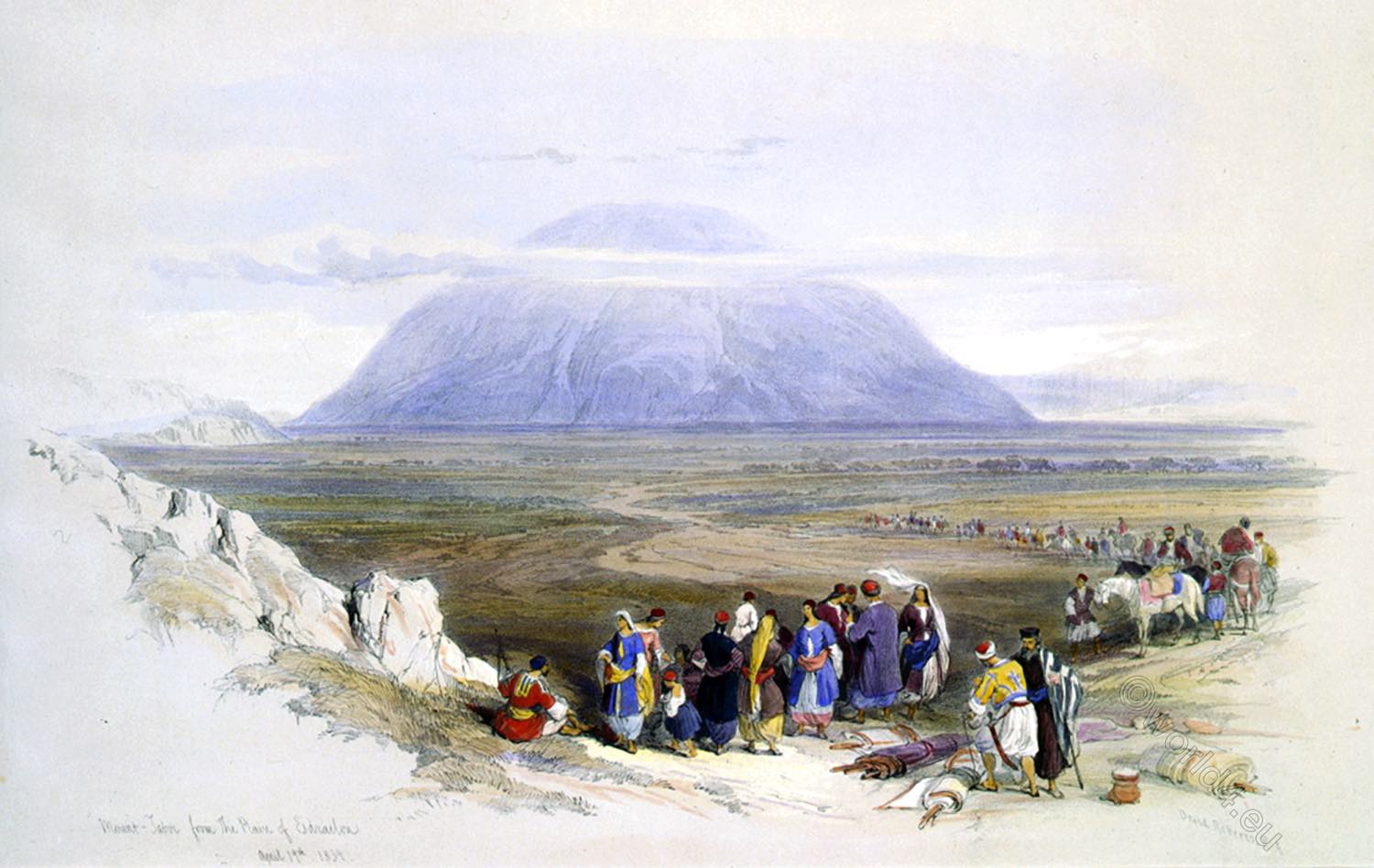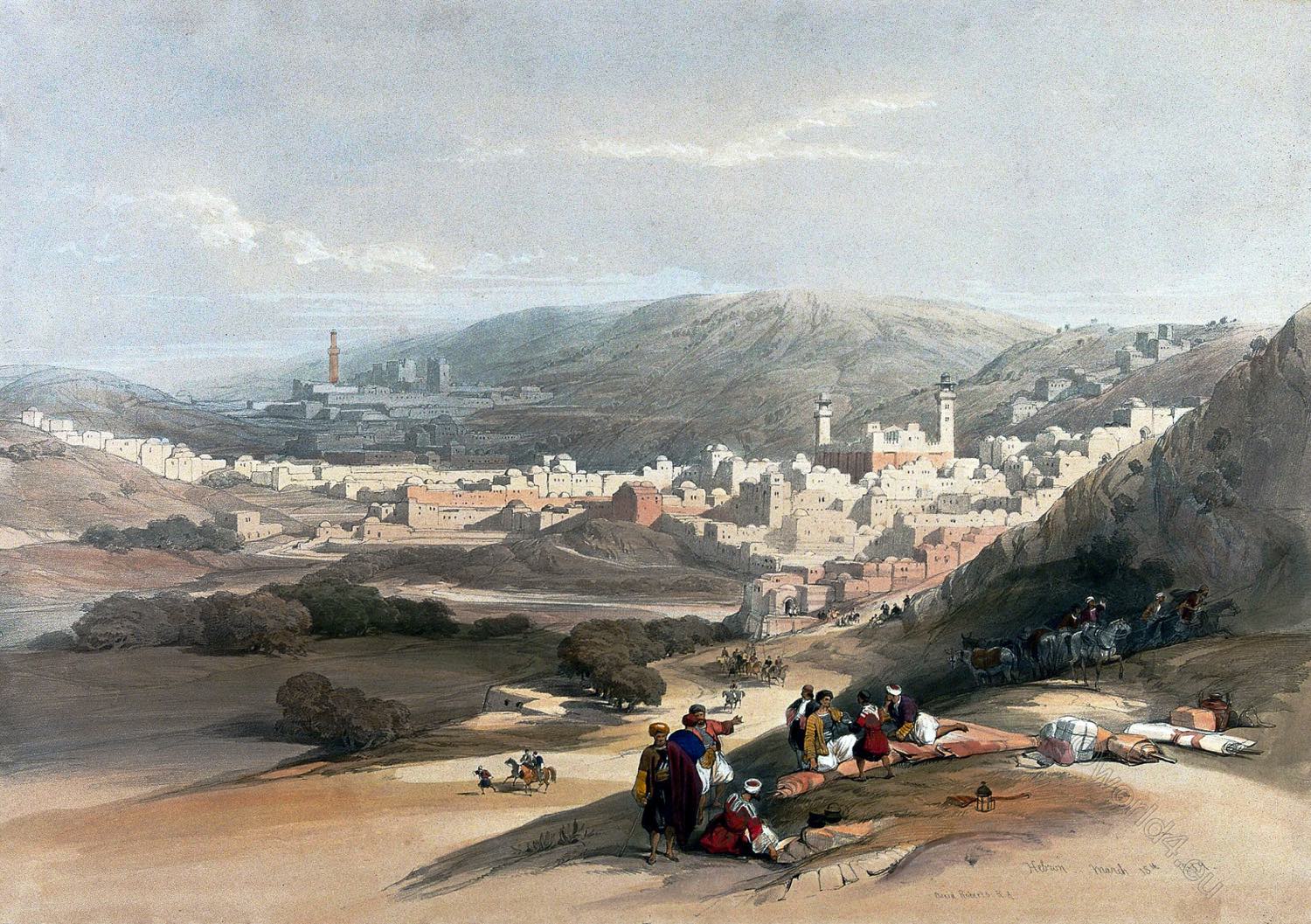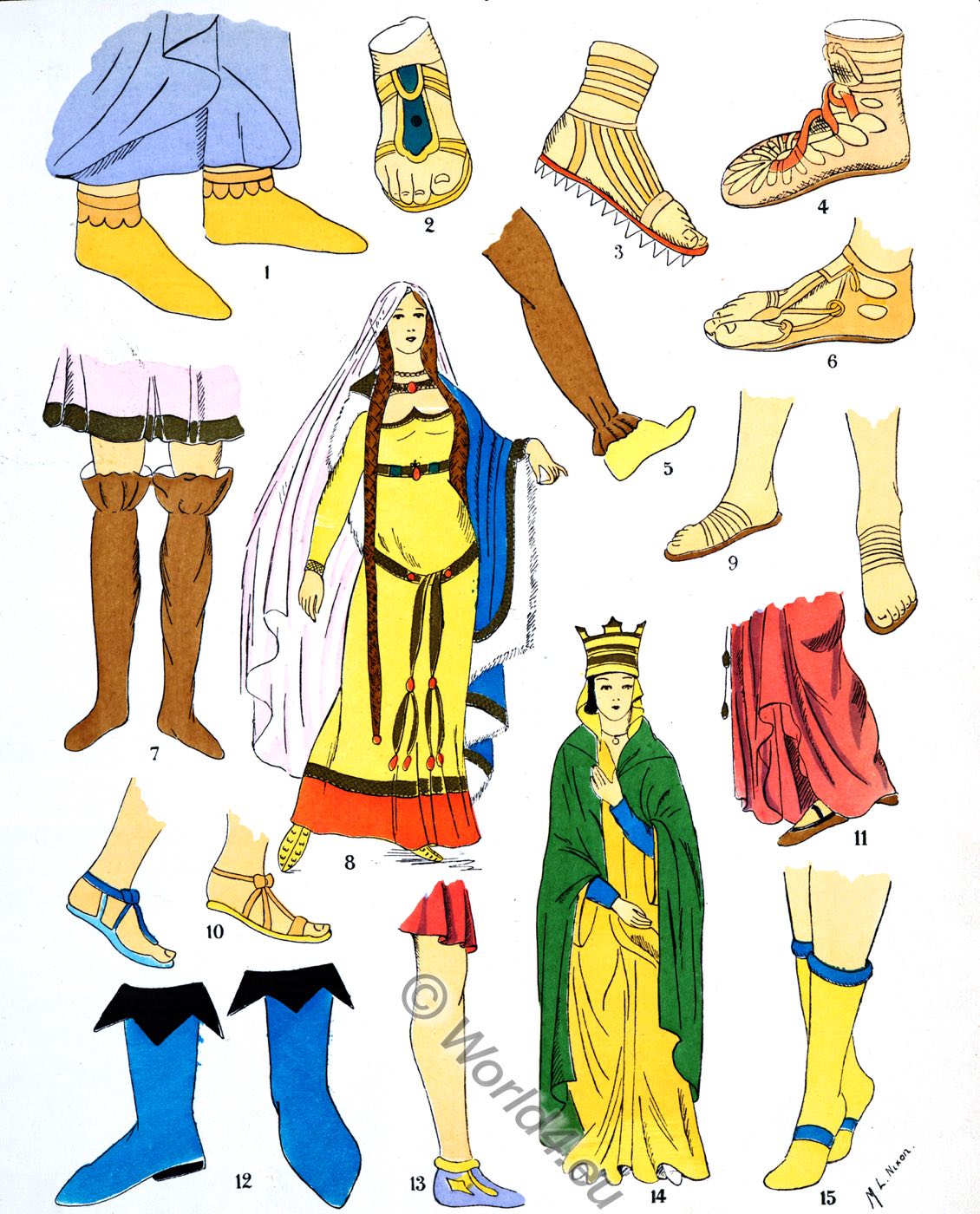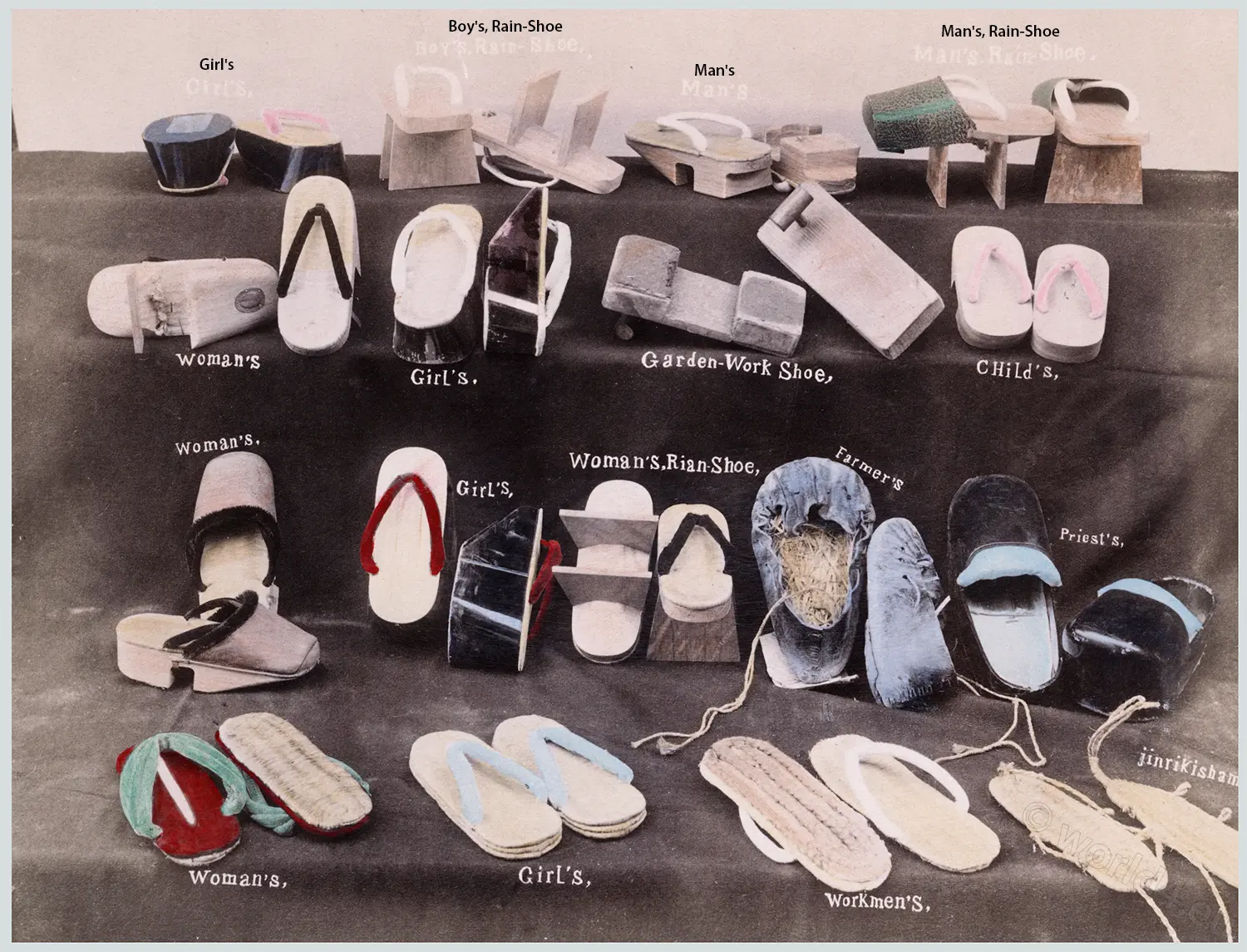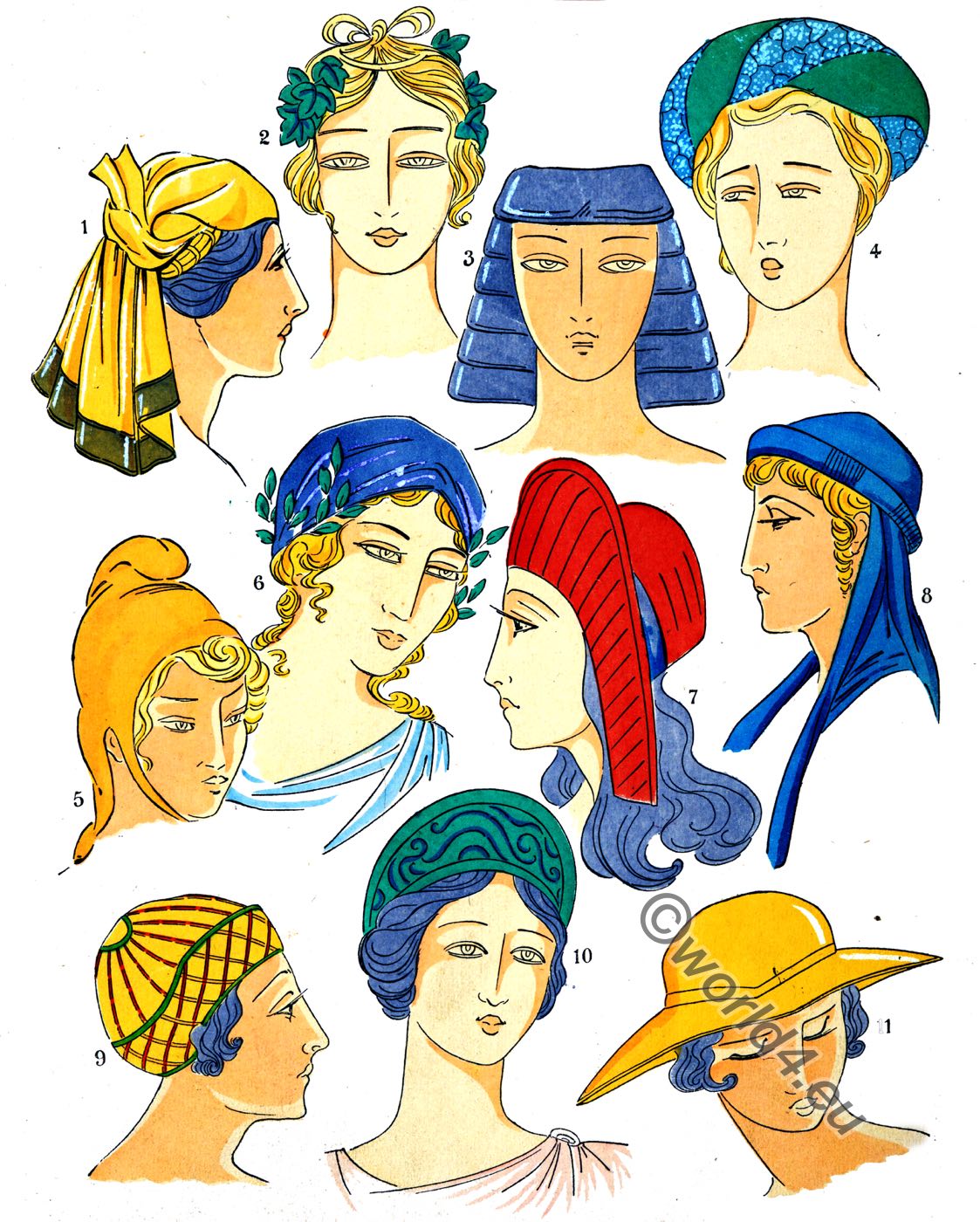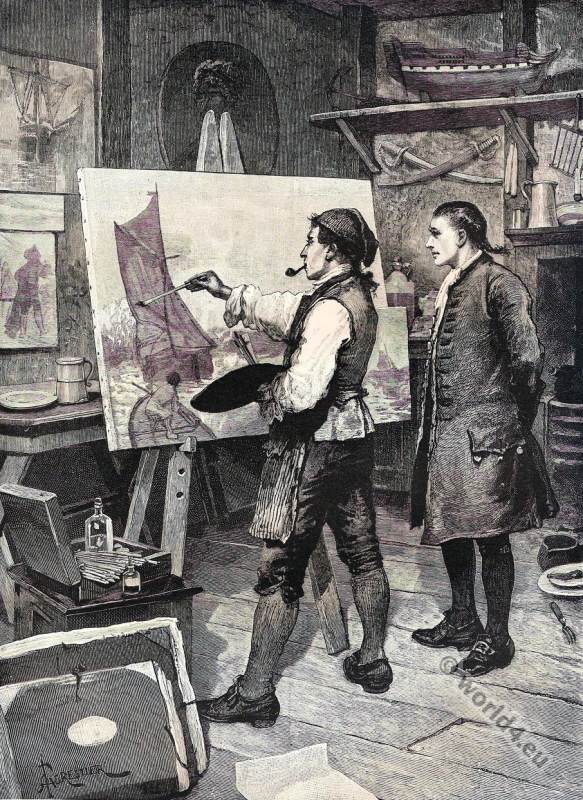
CLASSICAL ANTIQUITY. FOOTWEAR. FASHIONS AND CUSTOMS, MAINLY AMONG THE GREEKS AND ROMANS.
No. 1 – Footwear of a Roman Emperor, after Baudouin (de Calceo antiquo et mystico).
Nos. 2 and 11 – Sandal and shoe of the ancient Egyptian women.
No. 3 – Solea or crepida. Right and left foot of Diana of Versailles in the Louvre.
No. 4. – Crepida of Pallas of Velletri in the Louvre.
No. 5 – Ocrea, peasant shoe in the style of the perones; after Willemin.
Nos. 6 and 6a. – Roman lamp in the form of a foot; time of Juvenalis; after Baudouin.
No. 7 – Ceremonial shoe of Honorius I, Pope 638. Rocca (Thesaurus sacrarum antiquitatum 6. II.)
No. 8 – Ceremonial shoe of Sylvester I, Pope 314.
Nos. 9 and 10 – Greek soldier’s shoe, published by Borioni.

No. 12 – Mulleus, statue of Caesar in the Louvre.
No. 13 – Roman soldier’s shoe, after Baudouin.
No. 14 – Greek footwear, after Willemin.
No. 15 – Ancient Gallic footwear made of papyrus knit; after Baudouin.
Nos. 16, 28 and 35 – Ceremonial shoes of Charles the Great, Imperial Museum in Vienna. Museum in Vienna.
No. 17 – Ceremonial shoe of Martin I, Pope 649, published by Rocca.
No. 18 – Campagus, statue of Marcus Aurelius in the Louvre.
Nos. 19 and 40. – Footwear of the Greek soldier, from two sides. Statue of Mars, usually called Pyrrhus; after Willemin.
No. 20. – Caliga of C. Maccenius, centurio primi pili of the Praetorians. Bas-relief in the Louvre.
No. 21. – Caliga; after Montfaucon.
No. 22. – Shoe of the Huns; after Baudouin.
No. 23 – Roman emperor’s shoe; ibid.
No. 24, – Crepida; after Willemin.
No. 25, – Calceus, statue of Augustus in the Louvre.
No. 26. – Calceus of the Roman curular officials; after Baudouin.
No. 27. – Calceus, statue of Caninius or Canius, a Roman official in the province of Africa, in the Louvre.
Nos. 29. and 34. – Persian shoes. Bas-reliefs from Persepolis.
No. 30. – Crepida; after Willemin.
No. 31 – Runner’s boots from the Tower of the Winds in Athens.
No. 32 – Solea of wood with leather straps, Roman; after Baudouin.
No. 33. – Caliga from a bas-relief of the triumphal arch of Constantinus in Rome.
No. 36. – Footwear of the ancient Lombards. Statue in the Louvre.
No. 37. – Footwear of Posidonius, a Roman philosopher d. 51 BC; in the Louvre.
No. 38. – Crepida (sandals); after Willemin.
No. 39. – Ocrea; bas-relief: Antiope, Zethus and Amphion; in the Louvre.
No. 41. – Lace-up shoe, excavated by Heemskerk, in Rome.
No. 42. – Crepida, ibid.
No. 43. – Pero; statue of Antonius Aristeus in the Louvre.
No. 44. – Crepida (sandals); Villa Albani.
Nos. 45. and 49. – Greek footwear, seen from two sides: after Willemin.
Nos. 46. and 51. – Lace-up shoe of the modern Italian peasant.
No. 50. – Fragment of a rich Greek footwear; after Willemin.
Lace-up shoes – Nos. 41, 46 and 51.
Sandals. Nos. 1, 3, 4, 6, 9, 10, 14, 18, 19 and 40, 20, 21, 24, 30, 33, 37, 38, 42, 44, 45, 47, 48 and 49.
Closed footwear. Nos. 5, 12, 16, 22, 25, 26, 27, 29, 31, 34,35, 36,39, 43 and 50.
Cf. the text: Montfaucon, l’Antiquite expliquée – De Clarac, Des Costumes antiques. – Paul Lacroix, Alp. Duchesne and F. Séré, Histoire de la Chaussure. – Le Père Cahier, Nouveaux Mélanges d’archéologie, 1874, Didot.
Source: History of Costume in Chronological Development by Auguste Racinet. Edited by Adolf Rosenberg. Published by Firmin-Didot et cie. Paris, 1888.
[wpucv_list id=”136457″ title=”Classic grid with thumbs 2″]Related
Discover more from World4 Costume Culture History
Subscribe to get the latest posts sent to your email.

